
Publisher:
Bonnie King
CONTACT:
Newsroom@Salem-news.com
Advertising:
Adsales@Salem-news.com

~Truth~
~Justice~
~Peace~
TJP
Dec-01-2011 14:53

 TweetFollow @OregonNews
TweetFollow @OregonNews
The International: Sri Lankan government gave orders to commit war crimes, new evidence shows
Salem-News.comThe source alleges that extra-judicial killings of surrendering or captured members of the rebel Tamil Tiger group were committed as "standard operating procedure" during the last months of the war.
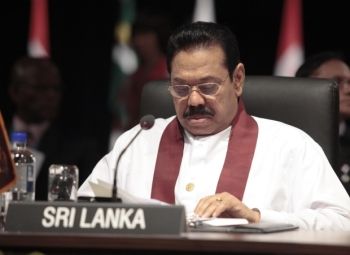 ri Lankan President Mahinda Rajapaksa during the Commonwealth Heads of Government Meeting in Perth, Australia, on October 28, 2011. Photographer: ComSec |
(COLOMBO The International) - Sri Lankan President Mahinda Rajapaksa during the Commonwealth Heads of Government Meeting in Perth, Australia, on October 28, 2011.
The Sri Lankan army ordered extra-judicial killings and assassinations during the final days of the country’s civil war, according to allegations made by a former member of the army. The source made the statements in an affidavit, obtained by The International as a part of an investigative report on the civil war, published today. The allegations were also accompanied by statements made by a witness who claims that he saw a number of serious war crimes being committed against civilians.
The assertions of the first source, who held a very senior position in the armed forces during the final period of the war, are perhaps the most significant. Having access to the flow of orders and strategy and holding a high level security clearance, his testimony appears to corroborate many claims made by the United Nations, prominent human rights organizations and a series of reports made by Channel 4 news regarding abuses carried out by the army.
The source alleges that extra-judicial killings of surrendering or captured members of the rebel Tamil Tiger group were committed as "standard operating procedure" during the last months of the war.
Furthermore, the source told the lawyer taking his deposition, which was witnessed by a public official of the state of New York, that the killings had been ordered by from the Defence Secretary of Sri Lanka, Mr. Gotabaya Rajapaksa. The source claims that he was informed that the Defence Secretary had passed on "some instructions to a field commander to get rid of those LTTE cadres who are surrendering."
In a crucial exchange recorded in the source’s testimony, he was asked: "Who would have given the order…that this is the way to handle the hardcore LTTE cadres?" The source replied: "It should come from either the secretary of the defense [sic], with the knowledge of the president involved. He also has to be kept informed. The commanders could not undertake such decisions.”
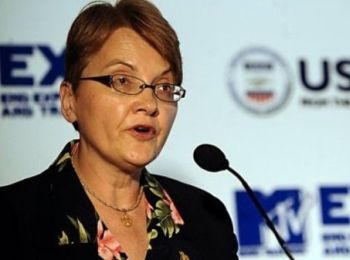 American diplomat Patricia Butenis |
Such a view appears to agree with statements made by American diplomat Patricia Butenis in a memo released by Wikileaks last year, in which she suggests that the responsibility for the alleged crimes rests with the country’s senior civilian leadership. In a cable dated 15 January 2010, she wrote: "responsibility for many of the alleged crimes [during the war] rests with the country’s senior civilian and military leadership, including President (Rajapaksa) and his brothers and opposition candidate General Fonseka."
In his testimony, the source also alleges that a former member of the LTTE who had been involved in extra-judicial killings was given "a freehand" to do so by the Sri Lankan military. This figure, known by the Nom de Guerre of Colonel Karuna, and also by the name of Vinayagamoorthi Muralitharan, now holds the position of "Minister for National Integration" in the Sri Lankan government. The Karuna group broke away from the LTTE after an internal dispute in 2004, and shortly afterwards started fighting their former comrades in co-operation with government forces.
A Wikileaks-released US State department memo, dated May 17th 2007, referring to the Karuna group, records what appears to be the opinion of a US diplomat that they helped the army "fight the LTTE, to kidnap suspected LTTE collaborators, and to give the GoSL a measure of deniability." She writes that similar reports had been made by a "number of trusted Embassy contacts, often at personal risk" who "have described in detail the extent of the GoSL’s involvement with paramilitary groups."
Such statements, again, corroborate the allegations made by the source.
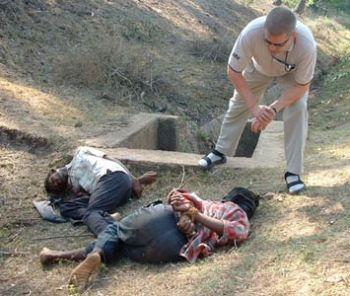
In other statements, the source admitted to the existence of "white vans" that were allegedly used for kidnappings during the same period. These vehicles were mentioned by a UN report in April this year as one of the many "credible allegations" made against the Sri Lankan government. The "white vans," according to the source’s testimony, were used by what he describes as "hit squads" of a few elite assassins hand picked by the Defence Secretary. When asked by the lawyer if Mr. Rajapaksa’s "predecessor [had] a hit squad" the source replied "no, it’s a new thing" which began with the present minister’s appointment in 2005.
In another claim, the source alleges that the 12-year-old son of Villai Prabhakaran, the late leader of the Tamil Tigers, was interrogated and killed. The source states: "I got to know at the latter stages that they found out where Prabhakaran is, through his son… And subsequently, I got to know that [the boy] had been killed."
The military source also stated that he was aware of threats or actual killings of journalists who criticised the government, including that of Lasantha Wickremathunge, who predicted his own murder at the hands of the government in an editorial published in the Sunday Leader newspaper in January 2009. Mr. Wickremathunge wrote just before his death that "[w]hen finally I am killed, it will be the government that kills me" adding, in a direct address to the President, "we both know who will be behind my death, but dare not call his name. Not just my life, but yours too, depends on it."
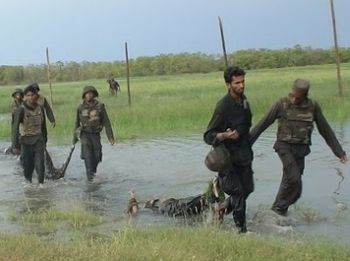
The source believed that a prominent cabinet minister was responsible for the killing, but added that he believed that the President sanctioned it. He told the lawyer: "this type of thing is coming from the top itself…the president…he is ultimately responsible."
If either the Defence Secretary or the President were aware of or ordered any of the alleged acts that the source claims occurred during the war, or for any extra-judicial killings, then they could be subject to prosecution for crimes against humanity under the Geneva Conventions. The Sri Lankan government has consistently denied that any such practices occurred.
What is particularly significant about the allegations made by the source, beside the seniority of the source and the legally-binding nature of his testimony, is that they appear to corroborate many of the most serious claims levelled at the government of Sri Lanka.
The UN, in a report published in April this year, described allegations of extra-judicial killings and the "disappearances [of] numerous persons… perceived by the Government to critical of its approach or sympathetic to the LTTE".
In responding to alleged video footage of extra-judicial killings broadcast by Channel Four last year and also recently, Philip Alston, Special Rapporteur on extra-judicial, summary or arbitrary executions, stated that the documentation appeared to be "authentic." He added that the apparent killings should be investigated "as if they had occurred" and that it was essential to find out if the alleged execution in the film "was part of a widespread pattern."
The claims made by the military figure indicate that this is the case.
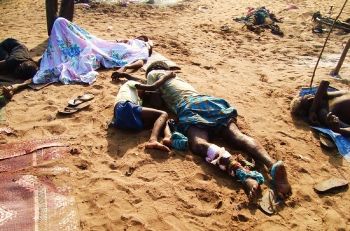
The testimony of the source that the order to kill surrendering LTTE fighters are also corroborated by other allegations made by members of the military, as recorded in a Channel Four news report in May this year. In the report, an anonymous soldier stated "Yes, our commander ordered us to kill everyone. We killed everyone", and another was quoted as saying: "Definitely, the order would have been to kill everybody and finish them off…It is clear that such orders were, in fact, received from the top."
In the second statement obtained by The International, a civilian witness also alleges that the Sri Lankan army committed war crimes. This source, who cannot be named for his own safety, has stated that the Sri Lankan army directed “several attacks on civilians and civilian infrastructure” including the use of civilians as "human shields." He related that he "specifically [remembers] . . . the hospital bombing of Matalan in March 2009 after being treated in a ward there," and was "present when the UN food distribution point was hit by Government attacks in Sudandarpuram in January 2009," resulting in the deaths of "a lot of children, pregnant women and mothers." He also said that he "witnessed the bombing of a church in Raddaivaaikaal in March 2009."
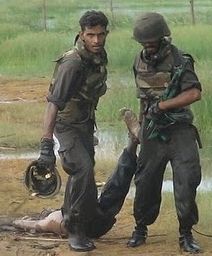
The civilian source claims that the most ferocious atrocities occurred near Nandikadal Lagoon, in the north east of Sri Lanka, the location where the body of Villai Prabhakaran (the former leader of the LTTE) was found shot dead.
Describing the area as being "full of people" the source alleges that the "Army was advancing and chasing people in front of them towards the Tamil Tiger (also known as the LTTE) frontlines" and used them “as shields in between them and the LTTE.” He also remarked that: "When the LTTE shelled [the army]…. the Army retaliated by shooting and shelling the people. People were dying in masses."
The source added that civilians with "white flags" were also used as human shields: "people were climbing up …in groups to run with white flags to the Army, but the Army often chased them back to the frontlines… to use them as their buffer." He described the attacks on civilians as "intentional" and "indiscriminate", stating that he estimated that he saw around three thousand dead bodies in the area affected.
The 26-year-long civil war between Sri Lanka’s armed forces and the separatist group known as the "Tamil Tigers" or Liberation Tigers of Tamil Eelam (LTTE), cost up to 100,000 lives between its beginning in July 1983 and its conclusion in May 2009, according to estimates by the United Nations. At present, there are two major inquiries investigating allegations of war crimes committed by the Sri Lankan government: a United Nations inquiry which is ongoing, and an internal inquiry within Sri Lanka, headed by a "Lessons Learnt and Reconciliation Committee" which is made up of a body of eight senior civilian figures, many of whom have served in legal roles for the government prior to and during the Rajapaksa administration. It is headed by Mr Chitta Ranjan De Silva, who was attorney-general of Sri Lanka from 2007 to 2009.
No one has been prosecuted to date.
Special thanks to The International.
http://www.theinternational.org/articles/184-exclusive-sri-lankan-government-gave-ord
 |
 |
 |
 End Israel's Unwarranted Murder of Kids |
Articles for November 30, 2011 | Articles for December 1, 2011 | Articles for December 2, 2011

googlec507860f6901db00.html
Salem-News.com:



Terms of Service | Privacy Policy
All comments and messages are approved by people and self promotional links or unacceptable comments are denied.
[Return to Top]
©2025 Salem-News.com. All opinions expressed in this article are those of the author and do not necessarily reflect those of Salem-News.com.